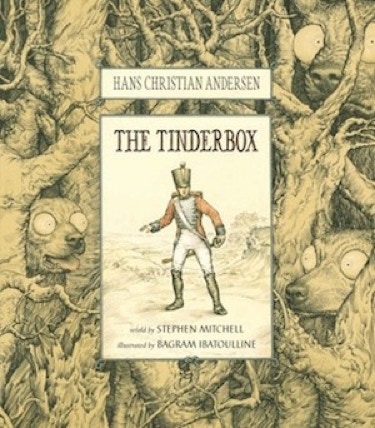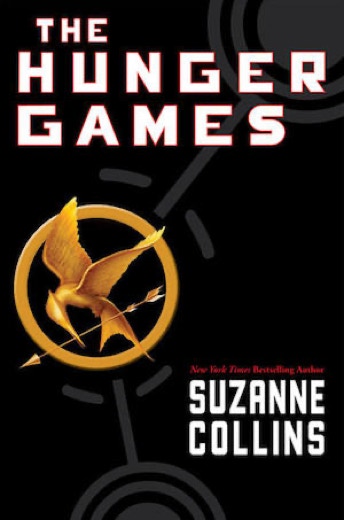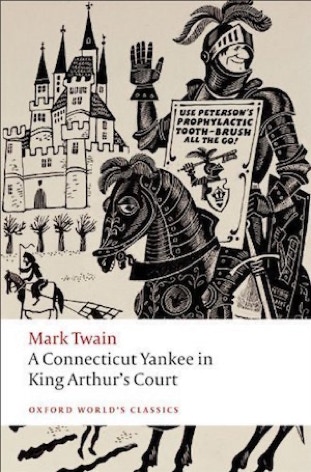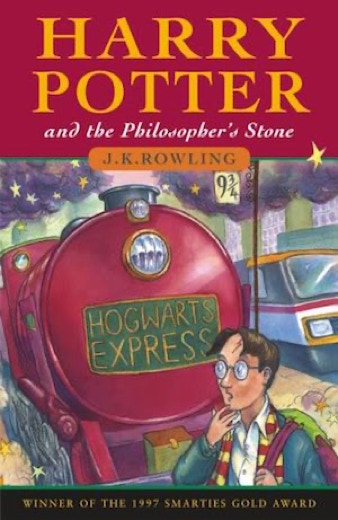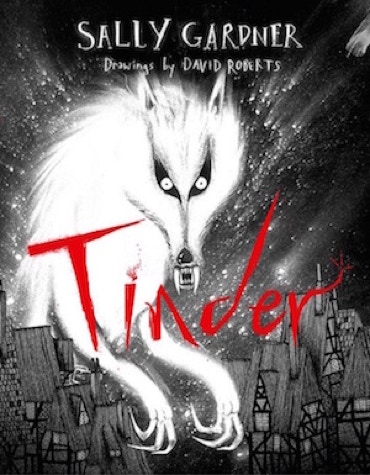Tinderboxes
Sally Gardner's Tinder, with drawings by David Roberts (Indigo, 2013)
Covers are a contentious area of discussion between writers and their publishers. My own view is that what's on the label should match what's in the can. And no one could say this isn't true of Sally Gardner's Tinder. A giant wolf with curling claws and vicious canines looms over a medieval cluster of houses. We are in the world of Grimm and the terrifying, uncompromising truths of fairy tale. Tinder is an adaptation of Hans Christian Andersen's fairy tale The Tinderbox (1835). Andersen's tale is a classic of the genre: an amoral narrative, generating patterns of three, and describing a world where the lower classes outwit the aristocracy. The peasant becomes the prince by employing a mixture of cunning, trickery, duplicity and violence. This is the world where the miller's youngest son gets to be the Marquis of Carabas, with a little help from Puss-in-Boots. The structures of the class hierarchies don't change, but robes and furred gowns hide all, especially your humble origins. Once you wear the crown, you are the king.
Fairy tales favour the bold. Ruthlessness pays off. In Andersen's The Tinderbox, an ordinary soldier returning home meets a hideous witch who gives him one task to perform, but three opportunities to become very wealthy indeed. Go down inside this hollow tree and you will see three doors with three keys. Inside are three chests, each guarded by a dog with enormous eyes. In the first chest, copper, in the second, silver, but in the third chest you will find gold. What is the task? Fetch me my tinderbox. And you may take all the money you can carry. The dogs will not harm you if you set them upon my apron, spread out upon the floor. All comes to pass as the witch predicted. The soldier isn't attacked by the dogs and returns with the tinderbox. But then he asks the obvious question.
'Why do you want the tinderbox?'
The mystery here is bound up with questions of value. The tinderbox appears worthless compared to the bulging chests. The witch won't reveal the secret of the tinderbox, but until she does the soldier won't give it to her. Impasse. He's armed and she isn't, so he cuts off her head and goes on his way, carrying both the money and the tinderbox. And so supernatural power lurking in the tinderbox passes from the witch to the soldier, who has yet to learn what wonders the tinderbox can perform. Fairy tales dramatise patterns, as oral narratives often do, and describe sudden shifts of power. No one is ever judged for committing casual murder, although there may be consequences. Christian morality is irrelevant. The action of Andersen's tale begins inside Sally Gardner's text on page 86. The radical change she has made in re-inventing the story is to give the soldier a name, Otto Hundebiss (which is German for 'dog bite'), an inner life, memories, a back-story, and control over the first-person narrative. More important still, she transforms fairy tale time into documented historical time. The tale is set during the Thirty Years War. 'It was on the second day of November 1642, in the midst of the battle of Breitenfeld... ( p.6). 'If you, dear reader, know nothing whatever about the Thirty Years War, it doesn't matter. This war stands for all wars. In her Author's Note Gardner reveals that her conversations with modern soldiers returning from Iraq and Afghanistan inspired her creation of Otto. The fairy tale narrator is always anonymous, telling tales without judgement or sentiment. But Gardner's tale is Otto's story. She gives us his experience of passion, temptation and extraordinary enchantment.
The question of audience for this book is therefore crucial. Grimms' tales in their original versions were neither safe nor comforting. Fairy tales, or folk tales, were never originally conceived with children in mind. The truths contained therein are much too brutal and too accurate. The illustrations to Tinder by David Roberts have all the power of a graphic novel, bristling with nightmare horror. But Gardner is well known as a children's writer. Her novel Maggot Moon (Hot Key Books, 2012), won both the Costa Children's Book Prize and the Carnegie Medal, 2013. So what age group can this novel possibly address? One of the other writers reading Tinder with me pointed out that this book lies outside all genres: a fairy tale source transposed into a first-person narrative, a deliberate crossover book that addresses young adults, presumably those with nerves of steel, as well as adult readers. The most disturbing aspect of Tinder arises from that psychological drama often described by returning soldiers, where nightmare and memory become blurred. What is real? Where does the horror of enchantment end? This extraordinarily daring book cannot have been easy to publish and only a writer with an established readership could have pulled it off. My companion reader continues: 'Gardner does follow two general rules of children's fiction. First, we must have a hero or heroine, someone who is special and chosen. And secondly, something that is good must be forced upon him or her, something that is evil has to be the hero's choice. This ensures that the reader's sympathy remains with the main protagonist. However unwillingly they may fulfil their moral duty, they cannot be seen to evade or avoid the responsibilities they have undertaken.'
This moral code is entirely alien to the fairy tale where treachery and trickery will always win the day. But it does conform to a pattern observable elsewhere in young adult fiction. Catniss Everdene in The Hunger Games (2008) chooses to take her sister's place in the murderous arena. Frodo accepts the task of bearing the ring of power back to the fires of Mount Doom in Tolkien's The Lord of the Rings (1954-1955). Both characters are reluctant heroes. Suzanne Collins' trilogy and Tolkien's epic are crossover books, read and enjoyed by adults and children alike. harrypotterThe Harry Potter series was originally written for nine-year-olds, and the first person I ever met reading Harry Potter and the Philosopher's Stone (1997) was a nine-year-old boy called Charlie, who thought the novel was 'pretty good'. The audience for Harry Potter grew up alongside the characters in the series and the films. Some adults read and enjoyed the books; some children became adults while they read their way through all seven volumes. But you cannot write a crossover book on purpose. Either the book crosses over the age gap or it doesn't.
Gardner's hero Otto Hundebiss pursues the beautiful cross-dressed Princess Safire through the narrative. He is a classic fairy tale character, the common soldier who appear's again in The Twelve Dancing Princesses, a man searching for love and a settled home. All fairy tales involve a task and a quest. The magic in Gardner's tale is not neutral, but a source of power filled with menace. The tinderbox, which cannot be destroyed, is mortally dangerous. To be the master of the tinderbox is to be in constant danger. In Gardner's tale, there are two sources of magic power: the tinderbox and the dice. All quest narratives include figures, which act as messengers or as guides, whose role it is to point out the way or deliberately create obstacles. The half-man, half-beast Otto encounters in the forest, the creature who collects the shoes of the dead, is one of these guides. He hands over the dice. The dice should symbolise chance, but they don't. They indicate the directions Otto should follow, and he ignores them at his peril. Otto is constantly in danger, and on the run. The malevolent tinderbox pursues him. 'This was the devil's plaything. Three times I had tried to rid myself of the tinderbox, three times it had returned, trailing the grave in its wake' (p. 129). Otto is the victim of a terrible destiny, from which there is no escape. And here again Gardner departs from the traditional duplicitous ethics of fairy tales. Cunning, courage and sly ingenuity all prove ineffective before the pattern of enchantment, which sucks him in and holds him fast. David Roberts has illustrated other books by Gardner and in Tinder he has excelled himself. The wolves are terrifying, the witches monstrous, the dead presences ghastly, cruel, unforgettable, as is the final image of death in Otto's eyeballs. The form of the novel exploits both colour and design. The colours are black, white and red, all used to dramatic effect. Sections of the book are written as nightmares, then the page darkens and the print becomes white. Thus the usual pattern of reading print is reversed. Some pages are drenched in red. The drawings are never redundant, nor do they merely echo the text.
As my fellow writer-reader commented, 'At some points the illustrations amplify the story, and at others they actually tell the story and command its meanings.' In her Acknowledgements, Gardner defends her decision to write a book that depends on its illustrations for much of its power and significance. 'As a young adult,' she writes, 'I was heart-broken that being grown-up meant reading books without illustrations and I had a vision that this story would be illustrated.' No need for sorrow or explanation. In the nineteenth century, the illustrators were often as famous as the writers with whom they collaborated. Dickens' novels were always illustrated and I have just purchased the Oxford World's Classics edition (Ed. M. Thomas Inge, Oxford University Press, 1997) of Mark Twain's satire A Connecticut Yankee in King Arthur's Court (1889) in order to have the original illustrations by Daniel Carter Beard. As Mark Twain well knew, the pictures sell the books. Beware the tempting hoard of treasure with its one small banal object that seems insignificant - a lamp, a tinderbox. I learned many things from Gardner's sharp, clean prose and daring contemporary conception of the fairy tale. She takes the fairy tale out of the nursery and writes the horror back into the action. She has not betrayed her chosen form, but returned to its source.
March 2014
